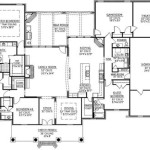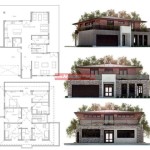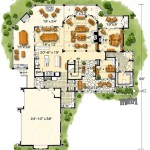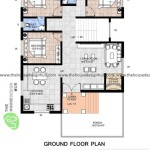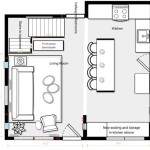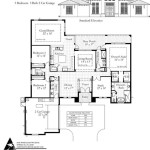Modern Thatched House Plans: A Guide to Essential Aspects
Modern thatched house plans offer a unique blend of traditional charm and contemporary design. With their sweeping roofs and natural materials, thatched houses can provide a sense of warmth and coziness while also being surprisingly energy-efficient and sustainable.
When considering modern thatched house plans, there are several essential aspects to keep in mind to ensure that your dream home is both stylish and practical.
1. Architectural Style
Modern thatched house plans can vary considerably in architectural style. Some plans embrace a more traditional aesthetic, with steeply pitched roofs and intricate detailing. Others opt for a more contemporary look, with sleek lines and minimalist features. The style you choose should complement your personal preferences and the overall design of your property.
2. Roof Design
The roof is the defining feature of a thatched house. Modern thatched roofs are typically made from natural materials such as straw, water reed, or heather. The thickness and angle of the thatch can be adjusted to create different visual effects and to suit the local climate. Proper thatching techniques are crucial for ensuring the longevity and weather resistance of your roof.
3. Insulation and Energy Efficiency
Thatched roofs can provide excellent insulation, keeping your home warm in the winter and cool in the summer. However, it is important to ensure that your house plan incorporates modern insulation materials and techniques to maximize energy efficiency. This can include adding a breathable membrane below the thatch and using high-performance windows and doors.
4. Ventilation
Proper ventilation is essential for thatched houses to prevent moisture buildup and potential damage to the roof. The thatch layer should be breathable, and there should be adequate ventilation between the roof and the interior of the house. This can be achieved through eaves, vents, or dormer windows.
5. Fire Safety
Thatch is a combustible material, so it is important to take fire safety measures into consideration when designing your thatched house. This includes installing smoke detectors and fire extinguishers, as well as creating defensible space around the house. Fire-resistant materials can also be incorporated into the roof design.
6. Location and Climate
The location and climate of your property will influence the design of your thatched house. For example, houses in windy areas may require stronger roof structures, while those in wet climates may need specialized thatching techniques to withstand heavy rainfall.
7. Maintenance and Longevity
Thatched roofs require regular maintenance to ensure their longevity. This can include periodic inspections, cleaning, and re-thatching as needed. The lifespan of a thatched roof can vary depending on the materials used and the climate, but it typically ranges from 25 to 50 years.
By carefully considering these essential aspects, you can create a modern thatched house plan that meets your needs and provides a truly unique and charming living space.

Thatch Dezeen

Thatch Roof Villa Id 13411

Thatched Hip Roof Tops Hubschmitz Architekten S House On Föhr Island Germany

Top 8 Ideas For Contemporary Homes With Thatch Cape Reed International

Mieke Van Herck Architects Sleek Extension For Thatched Roof House

Thatch Roof Villa Id 13411

Thatch Dezeen

Pin By Rebecca Mutambudzi On Bekki Likes Village House Design Round Plans Building Designs

Thatch Roof 3 Bedroom House Id 13421 Contemporary Plans New Beach

Rustic Dutch Seaside Residence Gets A Modern Makeover Capped With Thatched Top Decoist

